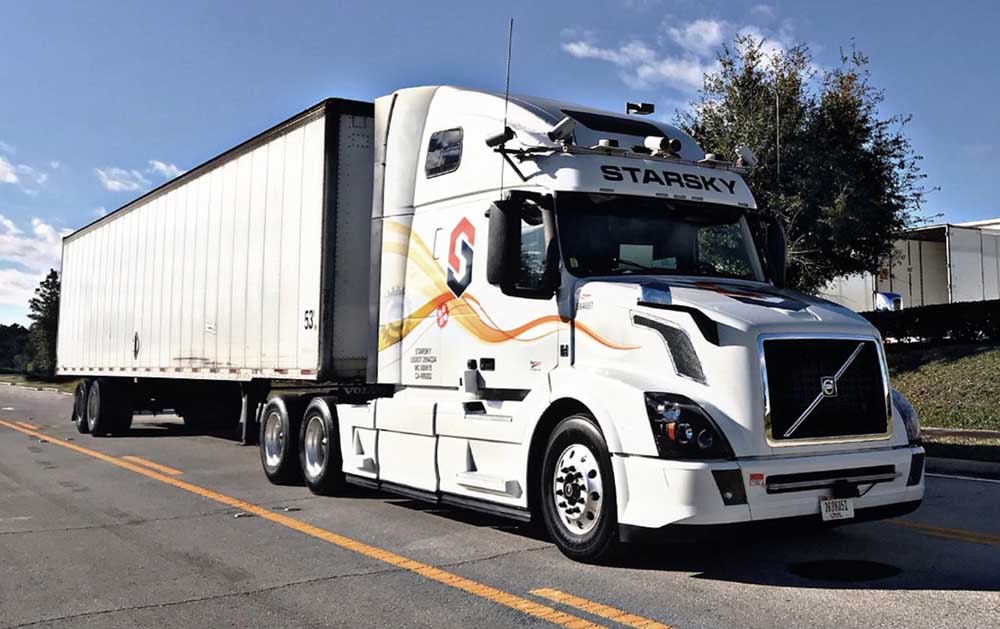Driverless semis to roll down Florida highways
Published 12:00 am Saturday, June 15, 2019

- Starsky Robotics, a San Francisco-based technology startup, is seeking to hire 100 truck drivers so it will have enough qualified to drive trucks remotely when it begins removing humans from its trucks in 2020. (Starsky Robotics/TNS)
Driverless semitrucks could be sharing Florida highways as early as next year, and there will be no requirement that surrounding motorists know it.
Nor will autonomous driving systems need to be tested, inspected, or certified before being deployed under a new state law that takes effect July 1.
Starsky Robotics, a San Francisco-based startup company that’s been testing its driverless trucking technology in Florida and Texas, has put out a call for job applicants who one day want to pilot big rigs remotely.
Starsky envisions its remote drivers logging onto computers in an office environment to take the reins of its trucks during the first and last miles of their long hauls.
That means the trucks will be on autopilot for the vast majority of their highway journeys.
Driverless deployments should begin in Florida by the end of 2020, Starsky says.
That’s much sooner than 2027, the year consulting firm McKinsey & Company projects fully driverless trucks will be ready to hit the highway.
This brave new world is brought to you by a new state law authorizing driverless transportation networks to operate on public roads without the presence of human drivers in the vehicles.
On Thursday, Gov. Ron DeSantis signed the bill enacting the law in a ceremony at SunTrax, the state’s new autonomous vehicle testing track in Auburndale.
While the law will also open the door for ride-sharing companies such as Uber and Lyft to deploy fleets for commuter use, DeSantis’ signing ceremony was staged in front of a Starsky-branded semitruck. Starsky demonstrated its technology during the event, the company said.
The new law replaces an existing one that required a human driver be present and able to take over driving chores in autonomous vehicles operating on public property for any other reason than testing.
Safeguards in the new state law are limited.
Companies will be allowed to deploy their systems with no state inspection or certification.
Owners of autonomous commercial vehicles will be required to carry at least as much liability insurance as the state requires for commercial vehicles driven by humans. Currently, that means a minimum level of $300,000 in combined bodily liability and property damage coverage for trucks with a gross vehicle weight of 44,000 pounds or more, and lesser amounts for lighter vehicles.
Autonomous vehicles used for “on-demand” networks must be covered for at least $1 million for death, bodily injury and property damage, the law states.
Starsky isn’t the only automated truck operator preparing to hit the nation’s highways.
Propelled by the rapid growth of e-commerce, retailers such as Amazon are busy automating as much of their supply and delivery chains as possible, and shipping is a major cost component ripe for disruption, according to a December report by the global management consulting firm McKinsey & Company.
Many modern rigs are outfitted with the kinds of sensors, cameras and other technology that enable them to operate with minimal human intervention, the report said.
Trucks with no driver could be possible by 2022, platooning behind trucks with drivers, according to the firm’s McKinsey Center for Future Mobility. Driverless trucks in platoons of two or more would follow beginning about 2025, with drivers boarding them on interstate highways to bring them into town. But McKinsey doesn’t expect driver involvement to be eliminated from all parts of the journey until 2027.
Other companies working on driverless truck technology include Portland-based Daimler Trucks North America, part of the Daimler Automotive Group that makes Mercedes-Benz vehicles, Tesla Semi, plus startups Embark and TuSimple.






